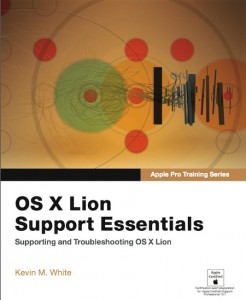
OS X Lion Support Essentials (Apple Pro Training Series)
by Kevin White
Peachpit Press
ISBN-10: 0-321-77507-4
ISBN-13: 978-0-321-77507-8
Price: $64.99
Lion (Mac OS 10.7) is still too young – even nearly four months after its launch in July 2011 – to have the usual clutch of high quality books which attend each major update to arguably the best operating system for a personal computer yet developed.
One excellent and comprehensive title is the Mac OS X Lion Bible by Gruman (ISBN-10: 1118023765 Â Â ISBN-13: 978-1118023761) from Wiley at nearly 900 pages. Less ambitious in some ways, more focused in others – and certainly every bit as useful – is Kevin White’s OS X Lion Support Essentialsin the Apple Pro Training Series from Peachpit.
At 600 substantive pages plus two appendices and an extensive index, OS X Lion Support Essentials is intended for a slightly different audience. Conscious of the huge amount of instantly-updated material online (not least on Apple’s own site), White’s book covers more technical ground for potentially more advanced users.
His main audience is that body of enthusiasts and professionals required – it’s in the book’s title – to support other users. This presupposes that things will go wrong. That complex combinations of circumstances will each require individually-designed solutions. That intricate intersections of sub-systems call for a thorough understanding not only of each of them (user accounts, peripherals, file system inter-dependencies etc), but also for an appreciation of how they all work together.

 White’s nine chapters address:
- Installation and configuration
- User accounts
- Filesystems
- Data management
- Applications and processes
- Network configuration
- Network services
- Peripherals and printing
- System startup
The appendices (35 pages) consider: General Mac troubleshooting and the “essentials” of using the command-line. Although White does spend about a tenth of the book discussing the actual software you use in Lion, Apple’s bundled applications, his emphasis is on 10.7 as a system, as a networkable entity to manage (large amounts of and at times complex) data.
There’s an emphasis on networking – over 170 pages, or a third of the book. If you add the 50 devoted to peripherals and 60 to user accounts, you might imagine that OS X Lion Support Essentials is only likely to be useful to professional administrators and network managers. Not so.
Understanding
White works from the premise that we all make better users by truly understanding processes, how the system functions as a fully integrated whole (there are 25 fascinating pages covering system startup, for instance) and such areas as Launch Services, file system metadata, essential security measures and similar. Armed with a thorough appreciation of why such sub-systems are built into Lion and how and why they work as they do, we’re likely to have a more satisfying experience.
This understanding has another side… that of handling such things as Unix’s hidden files [in chapter 4], the Command-line [appendix B], keychains [chapter 2], managing permissions via the Terminal [chapter 3] and so on. The “tricks”. But such functionality is not trivialized.
Nor is this book a dense technical reference manual, although it does cover troubleshooting well. Significantly, each chapter includes (sometimes lengthy) lists of Apple Knowledge Base documents to fill out our understanding of system journaling, factors that affect writing to or reading from optical media, Time Machine’s ‘local snapshots’ on portable Macs and so on.
In short, if you want to understand how and why to set up a user account, look first at Gruman. If you need to delve into resetting your password and the relationship between account long and short names, try White.
New in Lion
There is coverage – though not so much as you might expect and/or hope for – of such features new to Lion as AutoSave, Versions, Resume and FileVault 2. But this is not the book for an exposition (still less an opinion on) the likes of Mission Control. The assumption is that either you are already comfortable with such aspects of using the OS, or know where to go to get the background you need. White spends more time on, say, peripheral buses and networking printers and scanners. Although, since the series in general is geared towards Apple certification, White devotes a sensible amount of space to understanding, diagnosing and shooting trouble.
Lion is built on most aspects of most of the OS X iterations that have been used so far. It’s necessary to cover them too. So – as is almost always the case with such books -Â don’t expect OS X Lion Support Essentials to deal exclusively with 10.7.
Production
OS X Lion Support Essentials is very well laid out. Available both as an e-Book (both PDF and EPUB) and hard copy, it makes great use of white space, many screenshots – but never gratuitously to fill space. White’s style is authoritative and friendly: he knows his field.
In common with other titles in the Apple Pro Training Series, OS X Lion Support Essentials ends each chapter with a useful review, and a perhaps not quite so useful quiz. From a pedagogical point of view (this is a technical volume dealing with advanced concepts and practices, after all), the methodology is generally sound… objectives for each chapter are clear, made known to the user and well contextualized; then dealt with expeditiously and with no ambiguity or scope for confusion. You’re told at the end of each chapter what it is expected that you should have learnt – to use again as a checklist. White is an instructor, not a technician writing about Lion.
Conclusion: As in-depth, comprehensive and up-to-date a survey of the more technical aspects of OS 10.7 as is yet available. Well-written, approachable, clear, well-illustrated and easy to read, it deserves a place on the bookshelves (or perhaps the desks) of every serious Lion user.
Pros: Authoritative, accurate and useful
Cons: Expensive
MyMac.com Rating: 9 out of 10

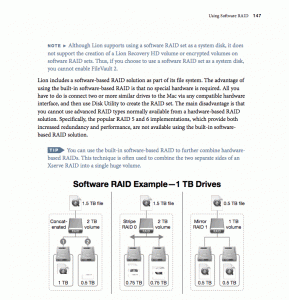
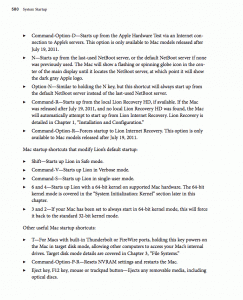
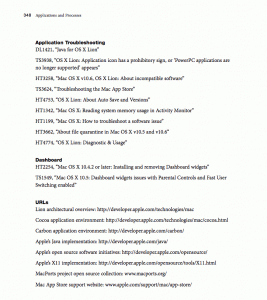
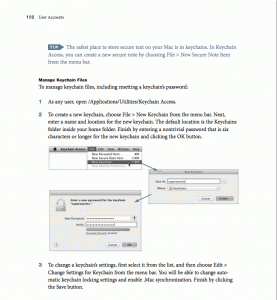
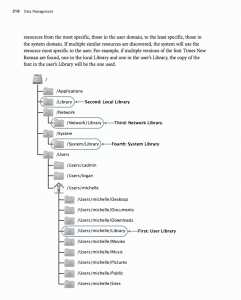
Leave a Reply
You must be logged in to post a comment.